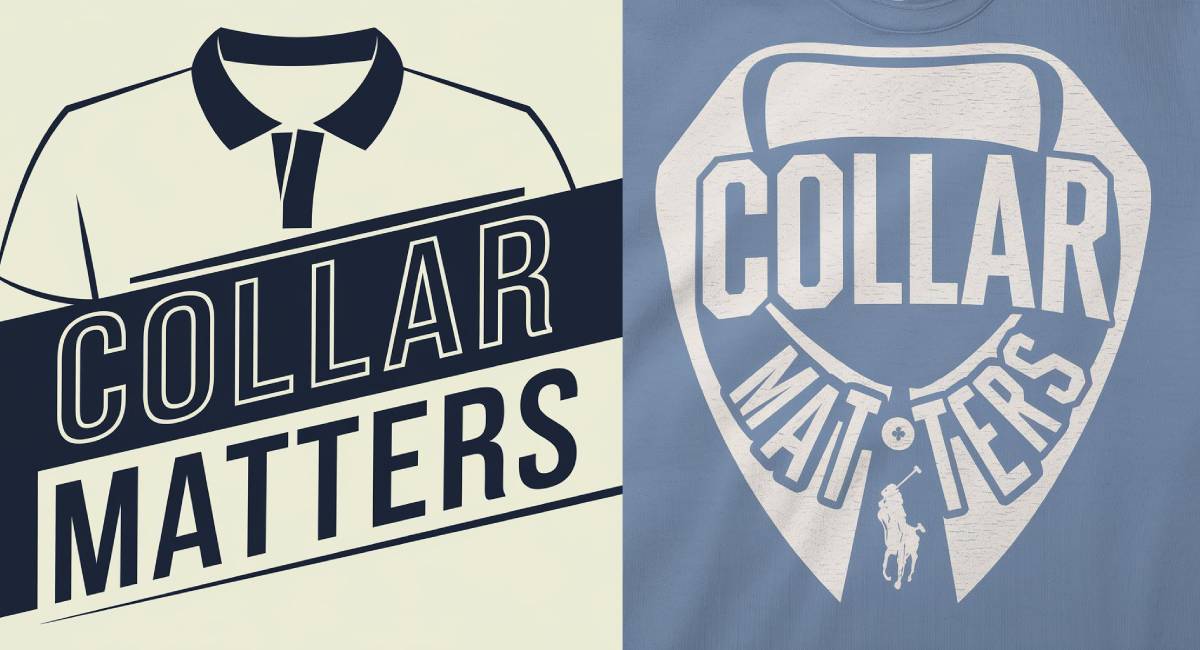Collars with Character: What Makes Polo T-Shirts Stand Out
Polo t-shirts are a timeless wardrobe staple, blending casual comfort with a touch of sophistication. One of their most defining features, collar matters, elevates the design beyond a basic t-shirt, making it suitable for both relaxed and semi-formal settings. Originally designed for athletes, polo t-shirts have evolved into versatile attire that fits various occasions. The collar not only adds structure but also serves a functional role, ensuring the shirt maintains its shape over time. In this article, we delve into the design features of polo t-shirts, focusing on why the collar plays a crucial role in their enduring appeal.
Where It All Began
- Historical Roots in Sports: The polo t-shirt originated in the sport of polo in the late 19th century. British polo players created it as a comfortable alternative to the long-sleeved shirts they wore during the game.
- Design by René Lacoste: The modern polo t-shirt is credited to French tennis champion René Lacoste, who, in 1926, designed a short-sleeved shirt with a soft, flexible collar for better mobility on the tennis court. Lacoste made the shirt from a breathable cotton knit, departing from the heavy woven fabrics of traditional tennis attire.
- Popularity in Fashion: Initially worn by athletes, polo t-shirts gained widespread appeal in the 1950s and 1960s, becoming a popular choice for casual wear. Lacoste’s brand, with its iconic crocodile logo, further cemented the polo’s place in fashion.
- Cultural Impact: Over the decades, polo t-shirts have transcended sports, becoming an essential item in both casual and business-casual wardrobes worldwide.
Key Design Features of Polo T-Shirts
- Collar: The signature feature of a polo t-shirt is its collar, which adds structure and versatility. Typically made from ribbed or reinforced fabric, the collar maintains its shape and creates a polished look suitable for casual and semi-formal occasions.
- Button Placket: Polo t-shirts feature a button placket, usually with two or three buttons, which enhances the shirt’s adjustability and style. It allows wearers to customize the neckline, balancing comfort and formality.
- Fabric: Manufacturers craft most polo t-shirts from breathable and durable fabrics like cotton piqué, jersey knit, or polyester blends. These materials offer comfort, moisture-wicking properties, and durability, making them ideal for various settings.
- Sleeves: Polo t-shirts generally come in short-sleeved designs, but long-sleeve options are also available for seasonal wear. Cuffed sleeves are a common detail, adding a touch of refinement.
- Fit and Cut: Polos are available in slim, regular, and relaxed fits to suit different body types and preferences. The hem is often slightly longer at the back, known as a tennis tail, designed to stay tucked in during physical activity.
- Customization Options: From embroidery to printed logos, polo t-shirts are a favorite for branding and personal expression, making them a versatile choice for businesses and individuals alike.
Types of Collars in Polo T-Shirts
- Standard Ribbed Collar: The most common collar style, this ribbed design adds elasticity, allowing it to maintain its shape. It provides a cozy fit and a classic, refined look that makes it perfect for both casual and business-casual events.
- Button-Down Collar: This collar features small buttons that fasten the collar tips to the shirt, providing a more structured and formal appearance. It’s popular in higher-end or customized polo t-shirts, adding a touch of sophistication.
- Contrasting Collar: This design features a collar in a different color or fabric from the body of the shirt, offering a bold contrast. It’s a popular choice for fashion-forward polo t-shirts, adding visual interest and a modern twist.
- Piqué Collar: A collar made from piqué fabric (a textured cotton weave) is a common feature in athletic or performance-focused polo t-shirts. The texture adds durability and enhances the shirt’s breathability.
- Flat Collar: A flatter, more subtle collar design that lays closer to the shirt’s neckline. It’s minimalistic and often seen in modern or slim-fit polo t-shirts, offering a sleek and streamlined appearance.
Why the Collar Matters
- Structure and Shape: The collar gives the polo t-shirt its signature structure, ensuring the shirt maintains a neat and composed look. Unlike a crew-neck t-shirt, the collar helps elevate the design, offering a more polished appearance.
- Versatility: The collar allows polo t-shirts to seamlessly transition between casual and semi-formal wear. Adjusting the buttons will enable you to modify the neckline for a relaxed or more formal vibe, making it suitable for different occasions.
- Comfort and Functionality: The collar helps keep the shirt in place, preventing the fabric from losing its shape during movement. It also offers sun protection by covering the neck.
- Timeless Style: The collar is a distinguishing feature that has remained consistent since the polo’s creation, contributing to its enduring appeal and status as a wardrobe essential.
- Maintenance: A well-made collar, often reinforced or ribbed, ensures durability. It helps the polo maintain its shape after multiple washes, extending its longevity.
Final Thoughts
The polo t-shirt’s collar is far more than a simple design feature; it plays a crucial role in the shirt’s structure, style, and versatility. From its origins in sports to its modern-day status as a wardrobe essential, the collar has contributed to the polo’s enduring appeal. Whether providing comfort, enhancing functionality, or elevating the overall look, the collar remains central to the design of polo t-shirts. As a timeless and adaptable element, it continues to make the polo t-shirt a go-to choice for various occasions, seamlessly blending fashion, function, and tradition.


